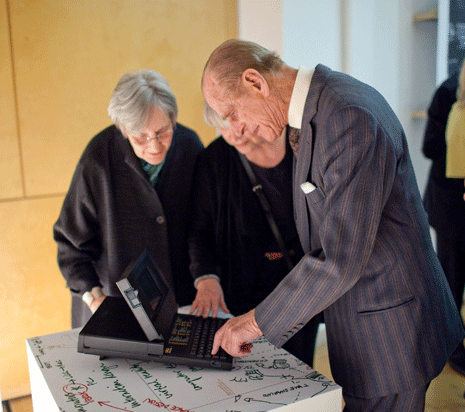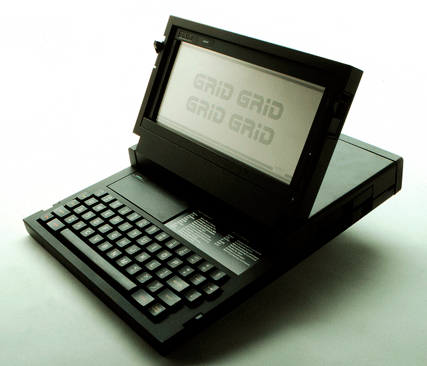
With the recent announcement of the Royal Wedding in 2011, the Royal family seems to be everywhere you look in the media at the moment with speculations about when it will be, what the wedding dress will look like and even punters betting on what colour the Queen’s hat will be on the big day. However, another member of the Royal family who featured in the press recently was Prince Philip who last week handed out the Prince Philip Designer’s Prize 2010. Now in its 51st year this annual award, which is run by the Design Council, recognises a person that has made a lifetime contribution to design. This year’s lineup was pretty impressive and amongst the nominees were avant-garde fashion designer Dame Vivienne Westwood, creator of the London 2012 Aquatics Centre Zaha Hadid and influential graphic designer Neville Brody. However, I was really pleased that my favourite to win the award from the start (not just because he is an industrial designer) Bill Moggridge walked away with the award. However, not knowing all that much about him, I decided to dig a bit deeper into his past and discover why he was indeed such a worthy recipient of this award.
In 1969 after completing his studies in industrial design Moggridge set up his own design consultancy in London. Having ranked up a pretty impressive portfolio over the years, he went over to California in the late 1970s looking for a good location to set up a US outpost. It was here where he picked up his first major client – John Ellenby who had set up GRiD Systems to develop a wholly new type of portable computer that would be small enough to carry around but powerful enough to still do the job that a desktop computer could. Although there were some luggable computers around at this time they were the size of sewing machines and Ellenby wanted a product that could fit inside a briefcase. He tasked Moggridge with creating the physical design of what would be known as the GRiD Compass. In an interview by Debbie Millman in the podcast show Design Matters Moggridge conveys how in order to find out what the max weight of the laptop should be he got everyone in the company to carry around what they would normally have in their briefcases together with one pound weights. They had to then had to let him know at what weight it became unbearable. This weight was 8 pounds and so Moggridge designed the product to weigh no more than this.

He also made the product extremely strong, durable and rugged (it was since used on the space shuttle during the 1980s). Many of the features he created are still seen in laptops today including the flat electroluminescent graphic display, the low profile keyboard, bubble memory and the die-cast magnesium enclosure. In fact its unique geometry contained more than 40 individual patent licenses, just showing how innovative and ground breaking this product really was when launched in 1982.
But the impact for Moggridge lay not in the physical design achievements, but in the way that the user interacted with the hardware and software. In a video clip on the Designing Interactions website he states: “I remember in 1981 I had the thrill of bringing back the first prototype that was actually working so I could sit down and try to use it. There was a sense of satisfaction as I opened the display, put the leg down at a convenient angle for typing and felt all the physical design aspects that I had worked so hard on successfully in place. But then I started using the software and I found that in just a few minutes I got completely absorbed by it – it was as if I was being sucked down into this world of software. At that point I realised that in order to design the experience for the user I would have to learn how to design the interactive technology rather than just the physical object. Hence, interaction design (although we didn’t call it that until later).” So, this fascination with how users interact with both the hardware (the physical machine) and software led Moggridge to pioneer the discipline of interaction design.

The broader view of ‘interaction design’ is described by Moggridge in his book ‘Designing Interactions’ as “The design of everything that is both physical and interactive. It includes the design of all the interactions that are enabled by digital technology, whether by computers, chips embedded in products or environments, services or the internet.” With this new founded design principle he co-founded IDEO in 1991 by merging his company with those of David Kelley and Mike Nuttall. He believes that the secret to the consultancy’s success has been in always taking a human-centered approach to helping its clients in the public and private sectors innovate and grow.
Moggridge worked on various projects as IDEO but with Tim Brown successfully taking the reigns of the company Moggridge decided to venture down other paths and became interested in what he calls “telling stories about design”.
In fact, he says that his career has had three phases: first as a designer designing stuff, then as a leader of design helping interdisciplinary teams design stuff together and then from 2000 as a communicator of design. So, he regularly attends conferences and seminars talking about the value of design in everyday life. He is also very active in design education notably as visiting professor in interaction design at the Royal College of Art and consulting associate professor in the Design program at Stanford University. He has also written a book Designing Interactions that when published in 2006 by MIT Press was named as one of the Ten Best Innovation and Design Books of 2006 by BusinessWeek. Last October he was honoured with the Lifetime Achievement Award at the Cooper-Hewitt’s National Design Awards at the White House and this year took up the post of director of the Smithsonian’s Cooper-Hewitt, National Design Museum in New York.
If that hasn’t kept him busy enough, just last month he launched a new book entitled Designing Media. In it he examines connections and conflicts between old and new media, describing how mainstream media have changed and how new patterns of media consumption are emerging. It contains interviews with 37 significant figures in both traditional and new forms of mass communication including the publisher of the New York Times and the founder of Facebook, Mark Zuckerberg.
So, having discovered a bit more about the life and work of Bill Moggridge, I realise just what a worthy recipient he is of the Prince Philip Designers Prize – he has really been central to how design has helped people understand and use technology. (I also need to get hold of a copy of his new book – looks like it will make for very interesting reading).







